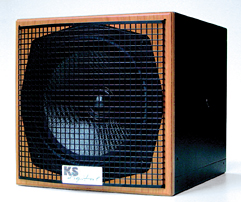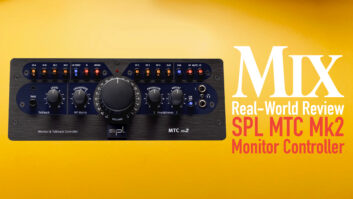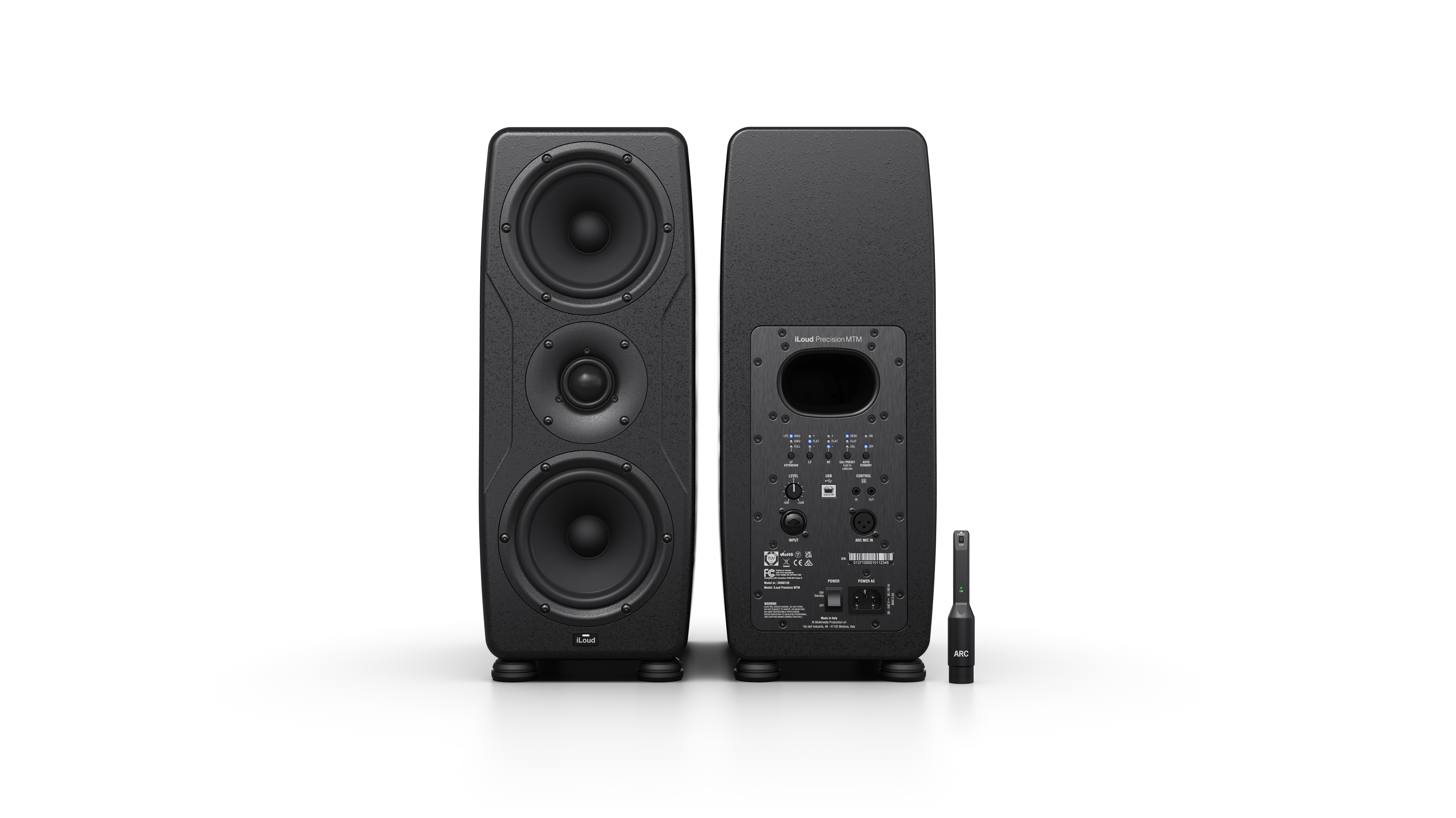
The C5 Tiny features an active, dual-driver coaxial design.
Sure, you may have the big guns in the soffit to impress the client who simply must monitor at ridiculous levels (as you step out of the room), but most of our mixing is done at much lower levels, with much smaller speakers. The ability to transfer your mix to just about any other speaker system is key, and that is executed through careful monitoring levels, with accurate speakers that tell you how the elements relate to each other, particularly at lower volumes. The KSdigital C5 Tiny is the type of speaker you can go to against your primary near-fields to get a reference to the relational balance on a smaller speaker — all without taking up much space and having enough power to have the headroom necessary to kick up the volume without distortion.
Neutral Design
Even though the C5 is diminutive in size, (7.9×7.9×9 inches, H×W×D), KSdigital’s primary design goal was neutrality. The speaker’s coaxial components provide point-source accuracy within the time domain, with a wide soundstage and solid imaging. Linear phase response is optimized, thereby creating a flatter frequency response. We’re not talking about DC to light here; published response is 79 to 28k Hz, and I can attest to the extended top end on these little boxes. You’ll hear the upper-end “air” that could be missing on a lesser system.
The speaker has a 6.5-inch woven-carbon cone driver with neodymium magnets; it’s a light, fast-moving material that’s still highly rigid in nature, avoiding any material-based induced distortion. The center tweeter is a woven-cap design, with the visual similarities of a simple dust cover. This design, in association with the high-output magnets, suppresses resonance within the membrane, producing its extended, upper-end response, allowing the mixer to make confident decisions when applying EQ in these areas.
A real wood front baffle should compliment any environment; the rest of the cabinent housing is of a flat-black metallic origin. The metal mesh grilles did not fit well, with one side refusing to stay put. The grilles are mounted on two sides of the speaker via a routed slot. The tension of the metal holds the grille in place, so a bit of bending could create a more “spring-like” effect to hold them in place, but I thought the design to be rather inadequate. I see these grilles immediately coming off under any and all circumstances.
Big Power
KSdigital provides substantial power for such small transducers — 100 watts for the highs and 170W for the lows. Plus, both MOSFET amps have extended response to 100 kHz. This amount of power provides an abundance of clean headroom before clipping, while a peak output stage limiter affords assurance against clipping and possible driver damage. The crossover is a third-order Bessel filter at 2.5 kHz, with an additional Chebyshev filter at 60 Hz to protect against “bottoming out.”
The C5 is a rear-ported design and has a rear panel balanced XLR input, sensitivity control and separate high/low EQ. A removable plastic plug provides access to the recessed pots for the three parameters. After adjustments, the plugs must be replaced — leaving them out increases the port turbulence exponentially. Input sensitivity is +6/-10 dB, giving enough range to interface with -10- or +4dB sources. The bass and treble controls are shelving-type with a ±6dB range. KSdigital does not state the knee points for the frequency controls; feeding pink noise through the C5s and a quick RTA analysis revealed that the low EQ shelves around 160 to 200 Hz and the high EQ around 3.15 kHz, going gently out to their maximum range.
Powered Up
On first listen, the C5s seemed a bit bright. After listening to these against other speakers, they do appear brighter than your average 6.5-inch full-range system. The extended top end is quite noticeable. This could make engineers believe they are hearing too much top end and turn down high-frequency elements in the mix, or apply EQ to lessen the upper-harmonic structure. You definitely have to learn these speakers.
Imaging was superb on mastered commercial releases and raw, self-tracked Pro Tools files at both 16/44.1 kHz and 24/88.2 kHz. Even with a limited low-end response, plenty of onboard power provided a nice punch on kick drums and bass guitars. There is no doubt that a subwoofer would complement these speakers nicely for music mixing, yet isn’t the point of a small, limited-response monitor to provide a “typical” speaker experience — with compromised bandwidth?
Evident from the front of the speaker, I noticed some port turbulence, which I initially thought was cone distortion. Listening to the back of the speaker, the distortion was definitely emulating from the rear ports. Without the little rubber plugs covering the gain and EQ controls (for access to the controls), the turbulence was amplified to the point of annoyance. After replacing the plugs, the distortion was greatly reduced but never entirely disappeared.
The top end is a different story, with cymbals and distorted heavy-metal guitars coming forward in the mix on the C5s as compared to my reference JBLs. Guitars particularly had a boost in the 1.25- and 6.3kHz ranges. Voice-over work is an application where these speakers excelled. Sibilance is immediately noticeable, as were smacking lip noises and unwanted page turns. These speakers really bring out what is happening in the top end, while tape, fan or any ambient noises cannot hide from the C5s.
Final Thoughts
As a secondary speaker system, the C5 Tiny is a winner. It gives mixing or tracking engineers another reference to use with their primary transducers. Broadcasters will like these for voice-over and radio work. Music mixers will have plenty of SPLs, and the speakers’ small size could make them highly useful in a remote truck or mobile rig. The extended top end really gives you an idea of what you may be missing up in the attic.
Bobby Frasier is an audio consultant, engineer and inventor of the Frasierita. His Beatle band, Marmalade Skies, is learning Side 2 of Abbey Road.








